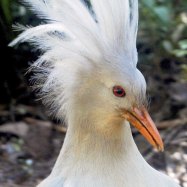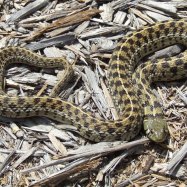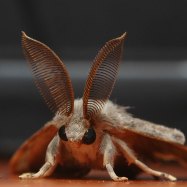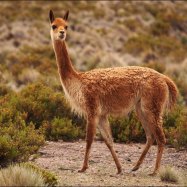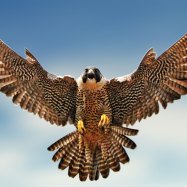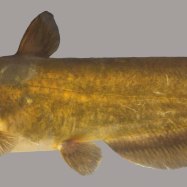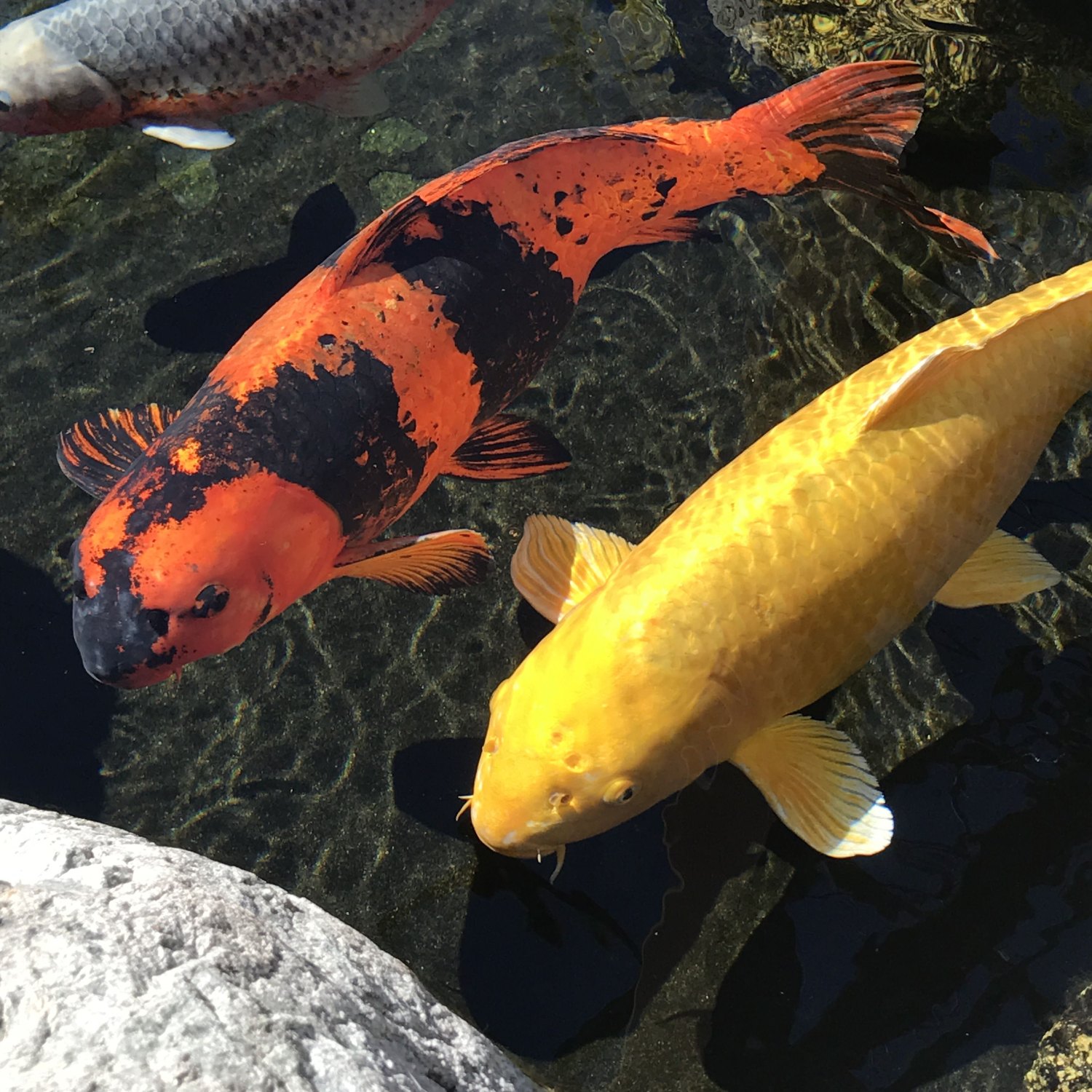
Koi Fish
Up to 3 feet (91 cm)
If you have a pond or artificial water body, you might have seen a Koi Fish swimming gracefully. These beautiful creatures belong to the Cyprinidae family and can grow up to 3 feet long. With their elongated and slightly flattened shape, they add a touch of elegance to any water feature. So next time you see a Koi Fish, remember its scientific name and appreciate its beauty.
Animal Details Summary:
Common Name: Koi Fish
Kingdom: Animalia
Habitat: Freshwater
The Wondrous World of Koi Fish: A Guide to the Majestic Omnipresence of Cyprinus rubrofuscus
The shimmering scales of the Koi Fish have captivated humans for centuries. Known for their vibrant colors and striking patterns, these fish have become a popular addition to ponds and water gardens around the world. However, there is much more to these elegant creatures than meets the eye.From their origins in Asia to their unique feeding habits and captivating coloration, the Koi Fish has a fascinating story to tell Koi Fish. So, let us dive into the wondrous world of Koi Fish and uncover the hidden secrets of Cyprinus rubrofuscus.
The Basics: Classifying Koi Fish
Before we delve into the mesmerizing world of Koi Fish, let us first understand how these creatures are classified.Scientifically known as Cyprinus rubrofuscus, Koi Fish belong to the Animalia kingdom, making them animals just like us. Within the animal kingdom, they are classified under the Chordata phylum, meaning they possess a notochord at some point during their development. This makes them chordates, just like humans.
Moving on, these majestic creatures belong to the Actinopterygii class, which includes ray-finned fish. This class is the largest among vertebrates, with over 30,000 species belonging to it. Within the Actinopterygii class, Koi Fish are further classified under the Cypriniformes order, which includes freshwater fishes such as carps and minnows.
Finally, Koi Fish are from the Cyprinidae family, also known as the carp family Kangaroo. This family is diverse, with over 2,000 species spread across various habitats, making Koi Fish a part of a truly fascinating group of fishes.
Aquatic Dwellers: Habitat and Distribution
Koi Fish are native to freshwater habitats, specifically ponds and shallow streams, making them an ideal addition to any garden pond. They were originally found in Asia and are thought to have been domesticated in Japan over 200 years ago.Today, Koi Fish can be found in ponds and artificial water bodies around the world. They have become increasingly popular among hobbyists, with countries like the United States and Israel producing and exporting large numbers of Koi Fish every year.
Koi Fish are cold-water fish, meaning they can survive in a wide range of water temperatures. This has contributed to their wide distribution and popularity, as they can thrive in various climates and regions.
The Alluring Colors of Koi Fish
One of the most defining features of Koi Fish is their brilliant coloration. They come in a wide variety of colors including white, red, orange, yellow, and black. These colors, coupled with unique patterns and markings, make each Koi Fish one-of-a-kind.The colors and patterns of Koi Fish are a result of selective breeding. Over the years, humans have selectively bred Koi Fish to enhance particular colors and patterns, resulting in the wide array of colors and patterns we see today.
Koi Fish are also known for their ability to change color in response to their environment. This is especially true for Koi Fish kept in ponds with different colored bottoms, as their skin color adapts to match their surroundings.
The Elegant Shape and Size of Koi Fish
When it comes to physical appearance, Koi Fish have an elongated and slightly flattened shape. This enables them to glide through the water with ease.Koi Fish can grow up to 3 feet (91 cm) in length, depending on their environment and feeding habits. In ponds and artificial water bodies, they tend to grow larger than their counterparts in the wild.
Omnivorous Feeders: the Unique Feeding Habits of Koi Fish
Koi Fish are classified as omnivores, meaning they feed on both animal and plant matter. In the wild, they eat a variety of aquatic plants, small insects, and crustaceans.In captivity, Koi Fish are known to be quite curious and will often eat anything that is given to them. They can be fed a diet of commercially prepared pellets, veggies, fruits, and even live foods like bloodworms and brine shrimp.
However, it is essential to maintain a balanced diet for Koi Fish and not overfeed them, as this can lead to health issues and water quality problems in their habitat.
The Role of Koi Fish in Human Culture
Koi Fish have been an integral part of human culture for centuries. In Japan, they are a symbol of good luck, prosperity, and perseverance. The Japanese believe that Koi Fish swim against strong currents and overcome obstacles, just like how humans should approach life.In Chinese culture, Koi Fish are associated with perseverance and success, often seen as a symbol of good fortune and wealth. The Chinese also believe that Koi Fish represent strength and masculinity, with the male fish being portrayed as a dragon and the female fish as a phoenix.
Today, Koi Fish are a popular addition to gardens and ponds, not only for their beauty but also for their tranquil presence. Many find peace in watching the graceful movements of these fish and find it therapeutic to have them in their surroundings.
The Importance of Koi Fish in the Environment
Aside from their cultural significance and aesthetic appeal, Koi Fish also play an essential role in their environment. As omnivorous feeders, they help keep the balance in ponds and water bodies by consuming excess algae and unwanted insects.Additionally, Koi Fish are valuable indicators of water quality. If the water conditions are not suitable for the fish, they will display signs of stress, such as gasping for air or developing black spots.
In this way, Koi Fish serve as a warning sign for potential problems in water quality. This is why it is crucial to regularly monitor the water conditions in their habitat and maintain a clean and healthy environment for their well-being.
The Future of Koi Fish
As with many other animal species, the future of Koi Fish is uncertain. While they continue to be bred and kept in captivity, their wild counterparts face threats such as habitat destruction and pollution.It is essential to educate ourselves and others about the importance of these magnificent creatures and how we can help protect their natural habitat. Responsible breeding and proper care in captivity are also crucial in ensuring the survival of Koi Fish for future generations to admire and appreciate.
In Conclusion
The Koi Fish, or Cyprinus rubrofuscus, are creatures of wonder and beauty. From their origins in Asia to their unique coloration and feeding habits, they have fascinated humans for centuries.Whether you have a pond in your garden or simply enjoy watching them at your local zoo, there is no denying the majesty and omnipresence of Koi Fish. So, let us appreciate these stunning creatures and work towards their conservation for a brighter future.

Koi Fish
Animal Details Koi Fish - Scientific Name: Cyprinus rubrofuscus
- Category: Animals K
- Scientific Name: Cyprinus rubrofuscus
- Common Name: Koi Fish
- Kingdom: Animalia
- Phylum: Chordata
- Class: Actinopterygii
- Order: Cypriniformes
- Family: Cyprinidae
- Habitat: Freshwater
- Feeding Method: Omnivorous
- Geographical Distribution: Asia
- Country of Origin: Japan
- Location: Ponds and artificial water bodies
- Animal Coloration: Various colors including white, red, orange, yellow, and black
- Body Shape: Elongated and slightly flattened shape
- Length: Up to 3 feet (91 cm)
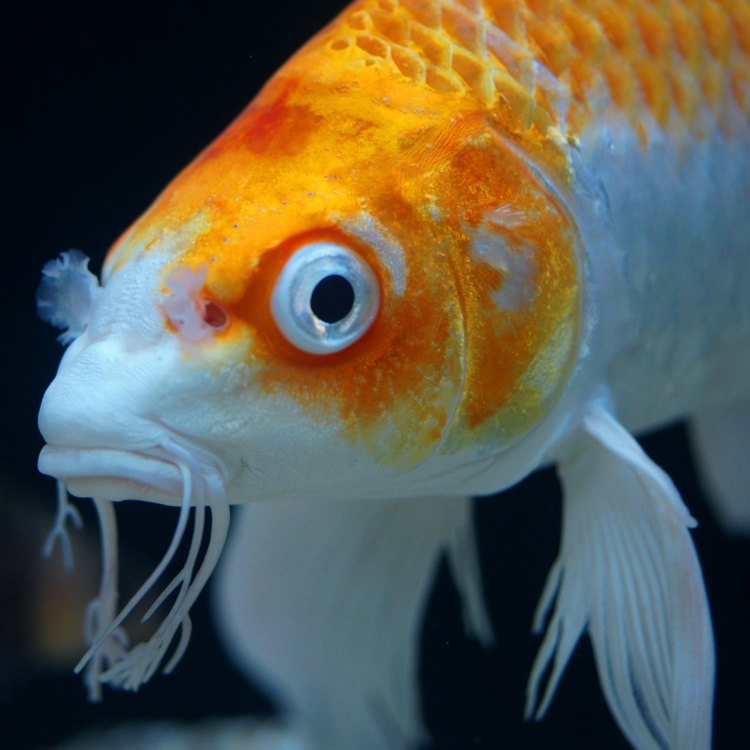
Koi Fish
- Adult Size: Up to 3 feet (91 cm)
- Average Lifespan: 25-35 years
- Reproduction: Egg-laying
- Reproductive Behavior: Spawning in shallow waters
- Sound or Call: No vocalizations
- Migration Pattern: Non-migratory
- Social Groups: Schools
- Behavior: Peaceful and social
- Threats: Predation, water pollution, habitat destruction
- Conservation Status: Not evaluated
- Impact on Ecosystem: Help control populations of insects and algae
- Human Use: Ornamental fish, recreational fishing
- Distinctive Features: Long fins, barbels, vibrant colors
- Interesting Facts: Koi fish are highly valued for their beauty and are often kept in ponds and gardens as ornamental fish. They have a long history in Japanese and Chinese culture, symbolizing good luck, prosperity, and friendship. Koi fish can be trained to recognize their owners and often surface when they approach. They have a strong sense of smell and can detect food from long distances. Koi fish are known for their ability to jump out of the water, especially during feeding time. They have a unique ability to change color and pattern throughout their lives.
- Predator: Birds, raccoons, otters, larger fish
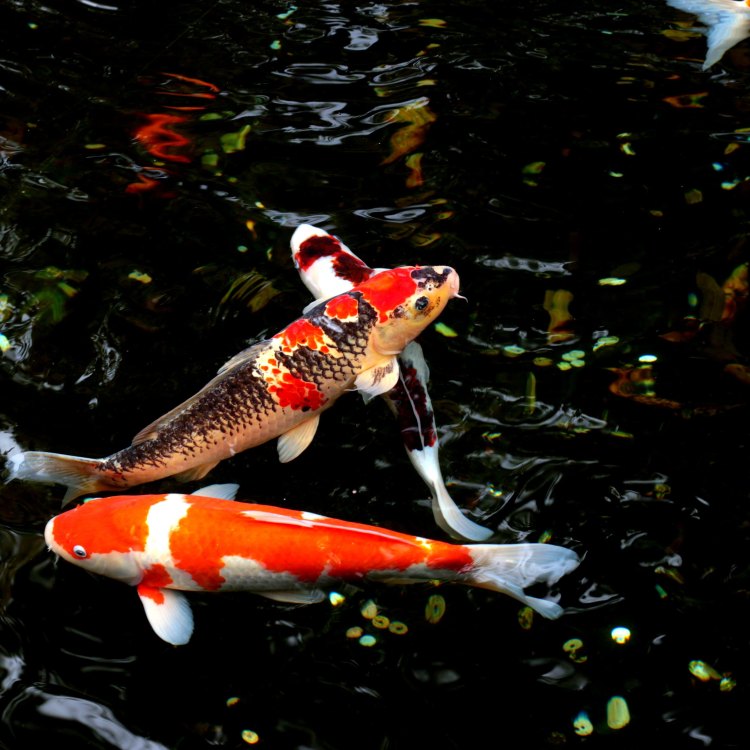
Cyprinus rubrofuscus
The Majestic Koi Fish: A Symbol of Beauty and Culture
In the shimmering waters of Japanese and Chinese ponds and gardens, a mesmerizing creature can be found - the Koi fish. Known for their vibrant colors and graceful movement, Koi fish have become a popular choice for ornamental fish and recreational fishing. But beyond their beauty, these fish have a rich cultural significance and unique features that make them stand out in the fish world. In this article, we will explore the fascinating world of Koi fish and their impact on both humans and the ecosystem PeaceOfAnimals.Com.The Basics: Size, Lifespan, and Reproduction
Koi fish, also known as Nishikigoi, are a species of carp that can grow up to 3 feet (91 cm) in length and weigh up to 35 pounds. They have a lifespan of 25-35 years, making them long-lived creatures. As egg-laying fish, Koi reproduce through spawning in shallow waters during the warmer months. They are not vocal and do not make any sounds or calls.
Their Peaceful Behavior and Social Groups
Koi fish are peaceful and social creatures, swimming in schools and coexisting with other fish species. They are also known for their friendly behavior towards humans and can even be trained to recognize their owners. In fact, it's not uncommon for Koi fish to surface and interact with their owners when they approach. This behavior is due in part to their strong sense of smell, which allows them to detect food from long distances.A Threatened Species: Predators and Human Impact
While Koi fish have a peaceful nature, they are not immune to threats Koolie. In their natural habitat, they face predators such as birds, raccoons, otters, and larger fish. However, the biggest threat to Koi fish is human impact. Water pollution and habitat destruction have significantly impacted their population, leading to their status as a threatened species.Conservation Status and Impact on the Ecosystem
Despite being a popular choice for ornamental fish, Koi fish are not on the International Union for Conservation of Nature (IUCN) Red List, as they have not been evaluated yet. However, their natural habitat, including rivers and ponds, is essential to the overall balance of the ecosystem. Koi fish play a crucial role in controlling populations of insects and algae, helping to maintain a healthy aquatic environment.Distinctive Features and Interesting Facts
Koi fish are easily recognizable due to their long fins, barbels (whisker-like organs), and vibrant colors. These colors can vary from white, black, red, yellow, and orange, with patterns of spots, scales, or stripes. But what makes Koi fish truly unique is their ability to change color and pattern throughout their lives. Factors such as water temperature and food can affect their coloration, making each fish one-of-a-kind.Aside from their distinct features, Koi fish are also known for their interesting behavior. They have a strong jumping ability, especially during feeding time, which may surprise many first-time Koi owners. This behavior is not only entertaining but also serves as a natural foraging behavior that allows them to catch insects and other food in the wild.
The Cultural Significance of Koi Fish
Koi fish have a long history in Japanese and Chinese culture, dating back to over 200 years ago. In Japan, Koi fish symbolize perseverance, strength, good fortune, and success in life. According to a legend in Japanese culture, if a Koi fish managed to swim upstream and reach a waterfall, it would transform into a dragon, the most powerful and respected creature in Chinese culture. Hence, Koi fish have become a symbol of determination and the ability to overcome obstacles.In Chinese culture, Koi fish represent prosperity, abundance, and friendship. They are often seen in traditional Chinese art and are believed to bring positive energy and good luck to those who keep them. In both cultures, Koi fish are also associated with the start of a new season, as they are the first fish to become active in the spring.
The Human Use of Koi Fish
Aside from being a popular choice for ornamental fish, Koi fish also have a significant impact on humans through recreational fishing. In Japan, Koi fishing is a traditional pastime, and Koi enthusiasts spend hours trying to catch the most exquisite specimens. In recent years, recreational Koi fishing has become popular worldwide, with competitions and exhibitions held to showcase the most beautiful and largest Koi fish.But Koi fish are not just used for leisure; they also have a practical use. In ancient times, Koi were bred as a food source, and their blood was believed to have medicinal properties. Today, they are also used in aquaculture to control the growth of algae and mosquito larvae in ponds.
In Conclusion
Koi fish are truly captivating creatures with their vibrant colors, peaceful behavior, and unique features. Beyond their beauty, they have a rich cultural significance and play a vital role in the ecosystem. It's important to remember the threats that these fish face and the need for conservation efforts to ensure their survival for future generations to enjoy. So next time you admire a Koi fish in a pond or garden, remember their symbolic meanings and the impact they have on the world around them.
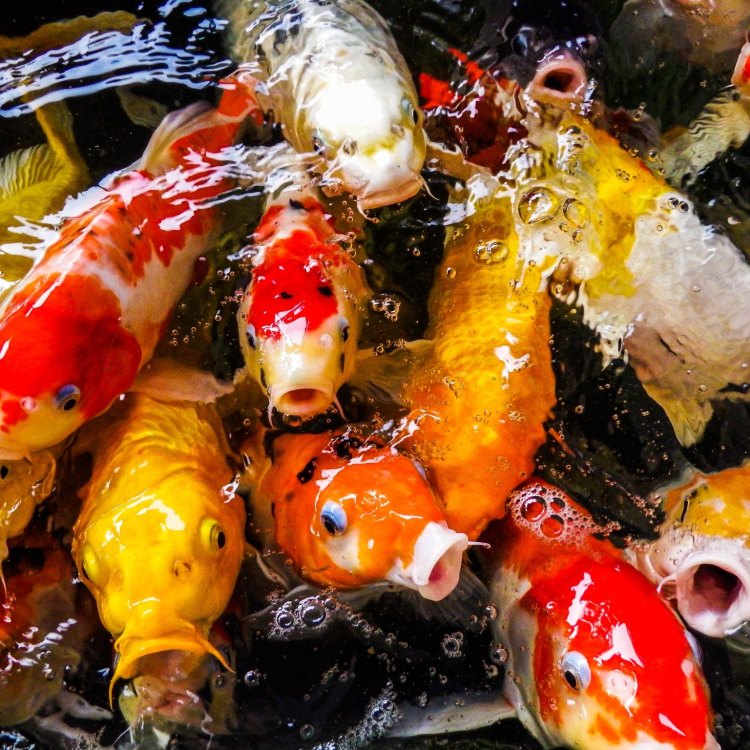
The Wondrous World of Koi Fish: A Guide to the Majestic Omnipresence of Cyprinus rubrofuscus
Disclaimer: The content provided is for informational purposes only. We cannot guarantee the accuracy of the information on this page 100%. All information provided here may change without prior notice.




